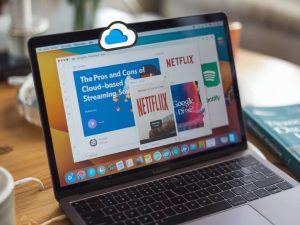How to create engaging live content for your webcast audience

How to create engaging live content for your webcast audience
Creating engaging live content for your webcast audience is essential for retaining viewer interest and driving interaction. Whether you are a seasoned broadcaster or new to the field, crafting captivating live shows requires careful planning, quality equipment, and a deep understanding of your audience. In this article, I will discuss various strategies and tips to ensure your live content is both engaging and effective.
Understanding Your Audience
Before diving into the specifics of creating engaging content, it’s crucial to have a comprehensive understanding of your audience. Knowing who they are, what interests them, and how they interact with live content will guide your approach. Use analytics tools to gather data on viewer demographics, preferences, and behavior patterns. Regularly review feedback from past broadcasts to identify what worked and what didn’t.
Planning Your Content
An engaging webcast starts with thorough planning. Here are some important steps:
- Define Your Objective: Whether it’s to educate, entertain, or inform, knowing your objective will shape the structure of your broadcast.
- Create a Detailed Script: Outline the key points you want to cover, but leave room for spontaneity to keep the content dynamic.
- Plan for Interaction: Determine how you will engage with your audience, whether through Q&A sessions, polls, or live chats.
Selecting the Right Platform
Choosing the right platform for your live content is vital. Popular options include YouTube Live, Facebook Live, Twitch, and Zoom. Consider the following factors when making your choice:
- Audience Demographics: Choose a platform where your target audience is most active.
- Functionality: Different platforms offer various features like chat integration, polling, and monetization options.
- Ease of Use: Ensure the platform is user-friendly for both you and your viewers.
Investing in Quality Equipment
High-quality video and audio are non-negotiable for an engaging webcast. Here’s what you need:
- Camera: Invest in a HD camera that captures clear, sharp images.
- Microphone: Use a professional-grade microphone to ensure crisp, clear sound.
- Lighting: Proper lighting can drastically improve the visual quality of your webcast. Consider using softboxes or ring lights.
- Stable Internet Connection: Ensure you have a reliable and fast internet connection to prevent interruptions.
Interactive Elements
Incorporating interactive elements is key to keeping your audience engaged. Here are several ways to foster interaction:
- Live Q&A: Allocate specific times during your webcast to answer viewer questions. This makes the audience feel involved and valued.
- Polls and Surveys: Use real-time polling to gauge audience opinions or gather feedback.
- Interactive Graphics: Use overlays and animations to highlight key points or illustrate complex ideas.
- Shoutouts and Acknowledgments: Recognize regular viewers or new subscribers during the live stream to build a sense of community.
Engaging Content Formats
Experimenting with different content formats can keep your webcast fresh and exciting. Consider these options:
- Interviews: Inviting experts or influencers for interviews can provide valuable insights and attract a wider audience.
- Live Demonstrations: Conducting live demos of products or services can be highly engaging and educational.
- Behind-the-Scenes: Showcasing behind-the-scenes content offers your audience a peek into your world, building a deeper connection.
- Storytelling: Weaving stories into your content can make it more relatable and memorable.
Pre-Event Promotion
Promotion plays a crucial role in attracting viewers to your live webcast. Utilize the following strategies:
- Social Media: Leverage platforms like Twitter, Facebook, and Instagram to announce your upcoming webcast. Use eye-catching visuals and engaging captions.
- Email Newsletters: Send out reminders to your email list with details about the webcast’s topic, date, and time.
- Collaborations: Partner with influencers or other content creators to broaden your reach and attract their followers.
- Teasers: Share short video teasers or snippets to build anticipation.
During the Broadcast
Ensuring a smooth and engaging live broadcast involves several best practices:
- Start on Time: Punctuality shows professionalism and respect for your viewers’ time.
- Engage Early: Begin interacting with your audience as soon as the broadcast starts to create instant engagement.
- Monitor Comments: Keep an eye on the live chat and address comments or questions to keep the conversation flowing.
- Adapt as Needed: Be flexible and willing to adapt your content based on real-time feedback and audience engagement.
Post-Event Analysis
After the webcast, it’s essential to analyze its performance to understand what resonated with your audience and what areas need improvement. Here’s how:
- Review Analytics: Examine metrics such as viewer count, engagement rate, and average watch time to gauge success.
- Gather Feedback: Conduct surveys or ask for feedback directly to gather insights on audience satisfaction and areas for improvement.
- Analyze Interactions: Review chat logs or social media interactions to identify common themes or questions that arose during the broadcast.
By following these strategies and continually refining your approach, you can create live content that captivates your webcast audience and keeps them coming back for more. Remember, the key to success lies in understanding your audience, planning meticulously, and fostering genuine interaction during your broadcasts.






